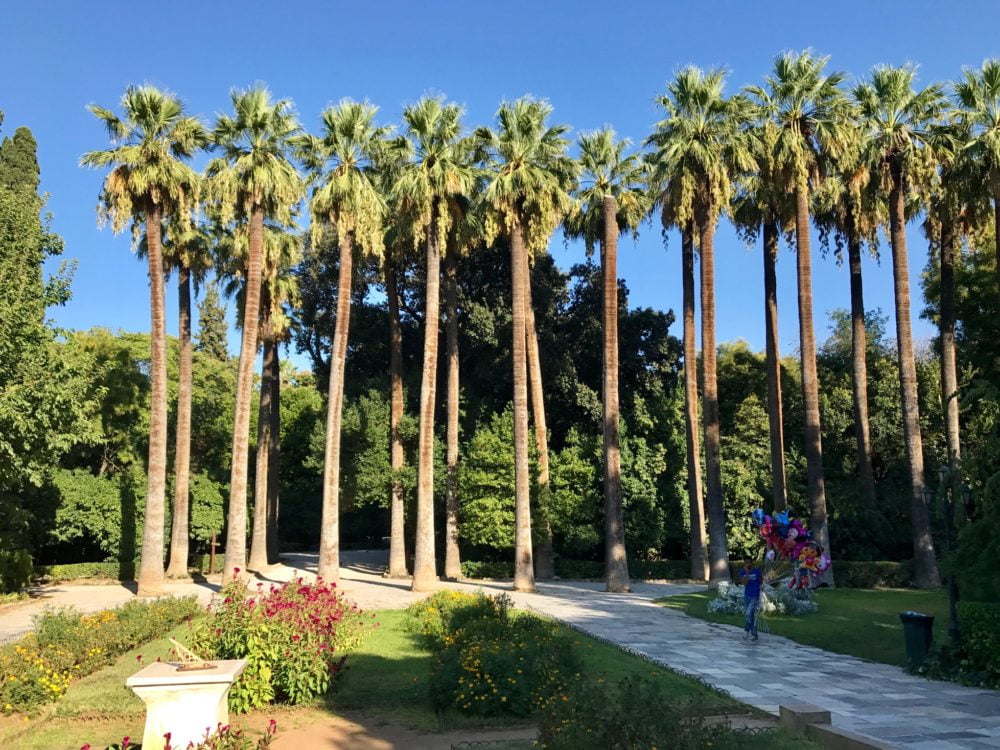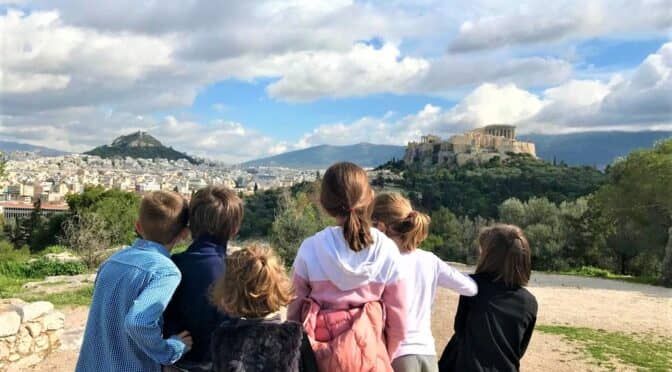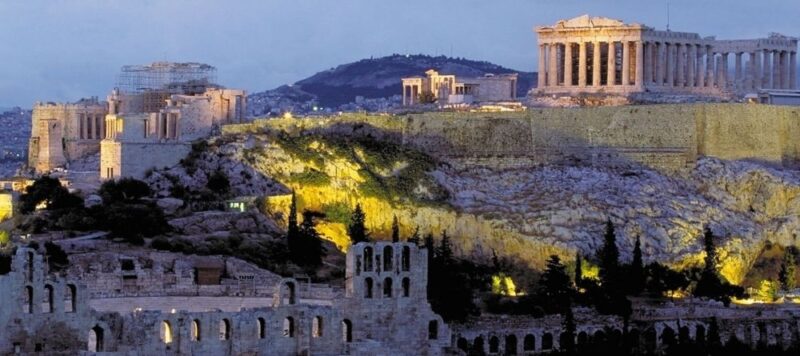We love the National Garden (Εθνικός Κήπος in Greek), a delightful urban oasis in the heart of Athens. Whether it’s a family get-together at weekends, a stopover during a hectic weekday between two business meetings, to marvel at friends who come to visit or simply to satisfy a craving for greenery: any occasion is a good one for a visit. Let us introduce you to this garden, which we consider to be the most beautiful green space in the city center.
Where is this famous national garden?
Impossible to miss! It’s right in the center of Athens, a stone’s throw from Syntagma Square, just behind the main square. the former royal palace, now the Greek Parliament. Covering an area of more than 15 hectares, it extends to the presidential palace and the Prime Minister’s residence and thus links the three most important buildings of the Greek state.
Because of its central location, but also because of its beauty, the National Garden is undoubtedly one of the must-sees on any visit to the Greek capital. We almost always take our visitors there… it really is one of our Athens classics.
Nearby to the garden and not to be missed:
- The changing of the guard at Syntagma Square: to the delight of young and old alike
- Panathenaic Stadium: a mythical site from antiquity to the present day
A queen’s garden
The National Garden is the former royal garden. It was built in 1839-1840 by Queen Amalia, wife of the first king of Greece, Otto I. Amalia wanted to give her husband a superb garden adjacent to the Royal Palace. She personally supervised its creation and was very attached to the park. As a result, some Athenians still call it the “Amalia Garden”, and the wide avenue in front of the main entrance is named after the queen.
Queen Amalia brought over 500 different plant varieties from different parts of the world to grace the royal garden. She also brought in animals: water turtles, billy goats, geese, ducks, rabbits, peacocks and parakeets.

But if we go back even further in time, it appears that in the 6th century B.C., one of the three public parks outside the city walls of Athens was located here. Dedicated to Apollo, it is said that this park was one of the places where Socrates liked to stroll and chat with his disciples. Archaeological excavations have revealed traces of this ancient park buried at a depth of around 1.5 m.
More recently, the Royal Garden was opened to the public in 1923 and renamed the National Garden in 1974.
But why do we love this national garden so much?
Simply because it’s magnificent! Wide avenues lined with lush, exotic vegetation. For us, it’s a real breath of fresh air.
We also like it because it has the enormous advantage of being cool, which is much appreciated on hot summer days in Athens. To us, it’s a delightful shady refuge. Bordered by the busiest avenues in Athens, it appears as a real oasis of coolness in the heart of the city.
And we’re not the only ones who love this garden! It’s as popular with tourists looking for a breath of fresh air as it is with Athenians out for a family stroll or jog. But because the space is so large, you never get the feeling that it’s too crowded.
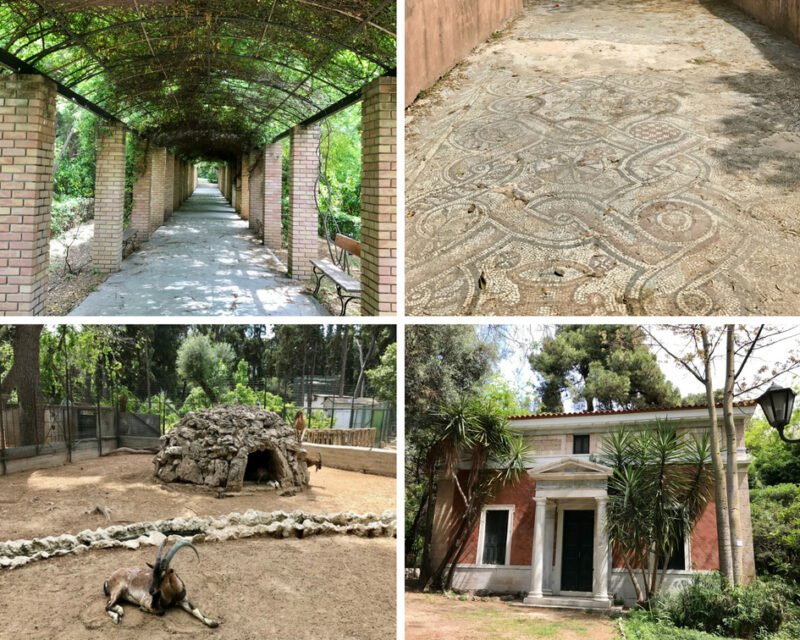
What to see and do in the National Garden?
We advise you to enter through the main entrance, on Amalias Avenue: you will be greeted by about twenty monumental palm trees that give an exotic air to the place. These palms are nicknamed “Ouasingktonies” in honor of the first American president. In an instant, you forget you’re in Athens!
Going for a walk
We particularly enjoy strolling along the tree-lined avenues: orange trees, fig trees, fragrant flowers and exotic plants. It’s a real pleasure to stroll around this green space. It is full of charm. Glades, ponds, a central lake with a small wooden bridge, fountains, arbors and a wisteria-covered pergola enhance this bucolic stroll. You can even hear the birds singing.
Admire the flora
The National Garden’s vegetation is rich and varied, a skilful blend of Mediterranean and exotic species found nowhere else in Greece. In all, there are around 7,000 trees, 40,000 shrubs and over 500 different plant varieties. Some of the trees planted when the garden was built still exist today.
Observe the statues
The national garden is decorated with works of art. Busts and statues of great figures from Greek history punctuate the park’s pathways.
Sit for a few moments on a bench
Numerous benches have been installed in the park. They allow you to regain your strength in the shade… and enjoy the splendors that were once reserved for the royal elite.
Watch the zoo animals
There’s a mini-zoo in the national garden with a number of species of animals and birds: ducks, geese, guinea fowl, peacocks, parrots, goats, rabbits, etc.
With children
In addition to the zoo, our children particularly enjoy the beautiful playground (half a hectare). It is located to the east of the park, near street Irodou Attikou. To find out more, see our article Visiting Athens with children: a walk in the National Garden.
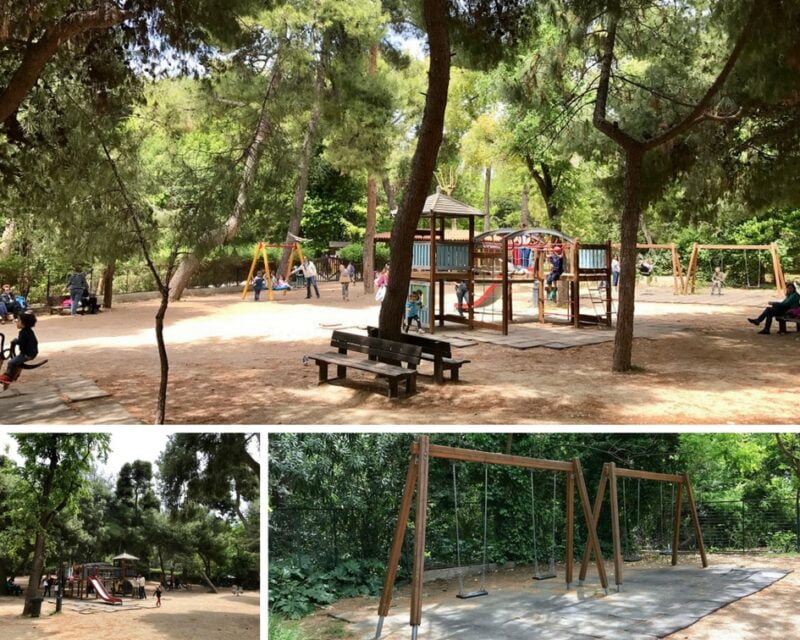
Back to Roman times
During your stroll, you can also discover a few relics of antiquity. In the national garden, you will find ancient columns and, above all, a Roman mosaic measuring over 400m² (located in the heart of the city). not far from the avenue Vassilis Sofias entrance, on the left of the lake).
We hope you enjoy this garden as much as we do and wish you a nice walk!
Laure M.
